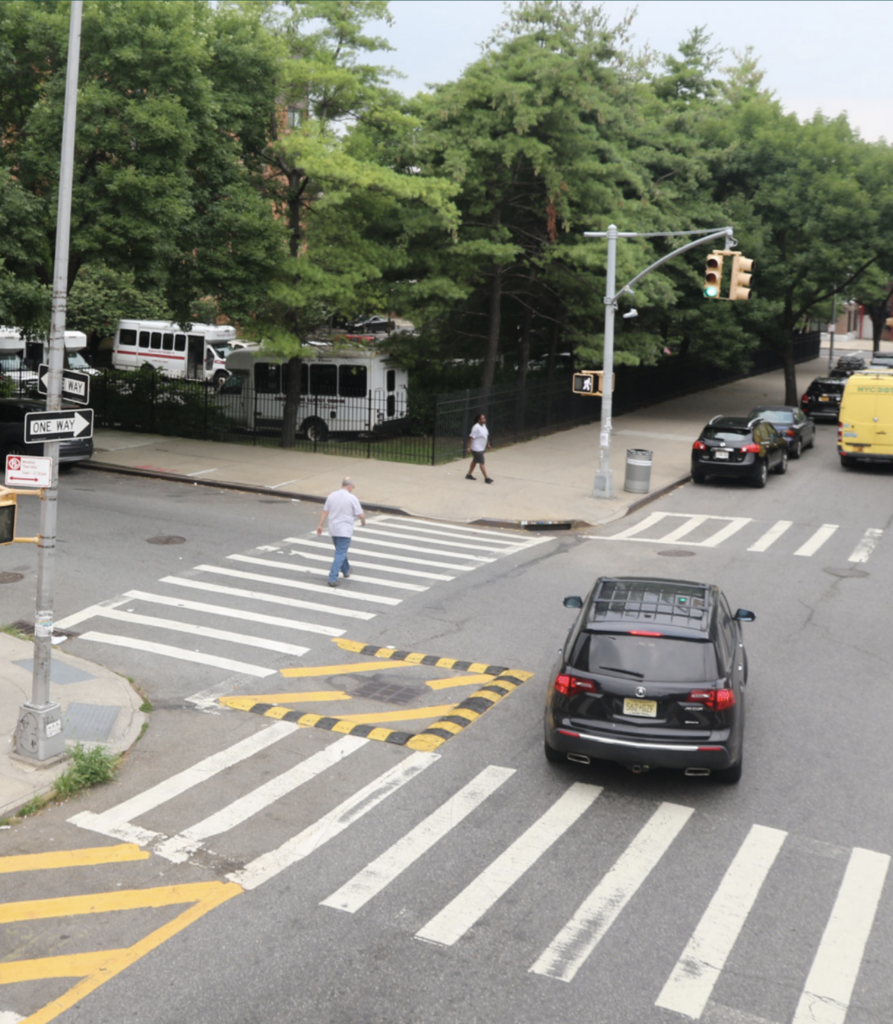How the Design of Corners Impacts Velocity

Half 4 of our sequence on Constructing Safer Streets

By Ruth Rosas, Mike McGinn, Ian Thomas
Velocity issues, and it significantly issues at intersections the place autos and pedestrians work together. We need to allow you to in on a design function that basically issues. When you see it, you’ll be able to’t unsee it. And also you’ll be amazed/dismayed to see how usually corners are designed for velocity, not security, and the way it may be fastened.
The connection between nook radii and velocity
All road corners rely upon a design parameter known as the “nook radius,” which is the curvature of the nook. The nook radius performs an important function in figuring out the security of an intersection. Sharp corners have small or tight nook radii. These corners require drivers to decelerate to take a flip safely. Alternatively, vast corners have giant nook radii and so they encourage excessive speeds when turning.
In lots of cities and cities, to facilitate turning when driving, intersections have been designed to be wider than crucial. As illustrated within the picture beneath, giant nook radii permit autos to make a flip with out decreasing their velocity. This creates unsafe situations for pedestrians as drivers are much less prone to yield to pedestrians and drivers have an elevated stopping distance as described in our earlier weblog.

As illustrated in picture beneath, smaller nook radii require drivers to decelerate as they strategy an intersection to show. By slowing down, drivers keep management of the automobile and are in a position to assess pedestrians at a crosswalk, oncoming visitors, and different objects and obstacles as they’re turning. If a driver doesn’t decelerate, the automobile might hit the curb or objects close to the nook.

Options of vast nook radii
Whereas sharp corners scale back the crossing distance, vast corners create longer crosswalks. The size of the crosswalk could make it tough for pedestrians to cross rapidly and enhance their publicity to visitors, together with autos which are turning. Sharp corners permit for pedestrians, particularly older adults, youngsters, or individuals with disabilities, to cross safely and to make sure they’re seen to drivers.
A very egregious model of the large radius is the “slip lane” which permits a driver to keep up speeds whereas avoiding a visitors sign. It’s significantly harmful for pedestrians to cross the unsignalized slip lane provided that drivers are sustaining a comparatively excessive velocity, and doubtless seeking to the road forward to time their merge with visitors. The secure and applicable answer the place pedestrians are current is to “sq. off” the intersection as proven beneath.

Security for everybody
Close to industrial areas or on designated truck routes, pedestrians might discover a lot wider corners to accommodate for giant vehicles.1 At instances, these designated truck routes undergo residential communities, largely in poor communities of colour2, creating unsafe strolling situations in these neighborhoods.
So subsequent time you’re speaking to a metropolis official, or higher but, the visitors planner/engineer answerable for the road – ask them if they will do one thing concerning the nook radius. Or level out the risks of the slip lane and ask them to shut it. Broad radii and slip lanes are examples of design decisions that prioritize automobile velocity over the security of individuals, inside or exterior of automobiles. Easy infrastructure modifications like those described above could make a giant distinction for security.
Tell us what you suppose, and be happy to share concepts for additional installments.
- Truck Security Concerns for Geometric Design and Visitors Operations
- Diesel vehicles are driving environmental injustice in elements of the US